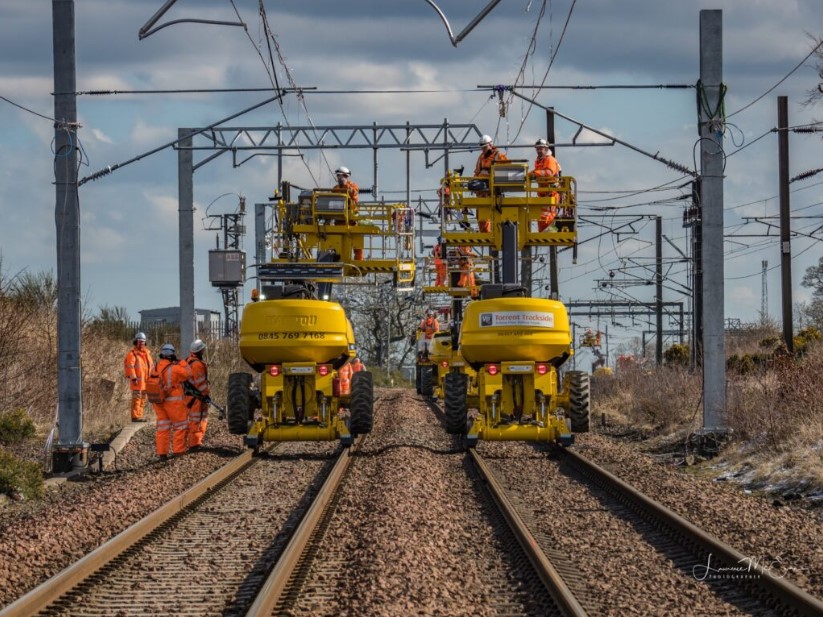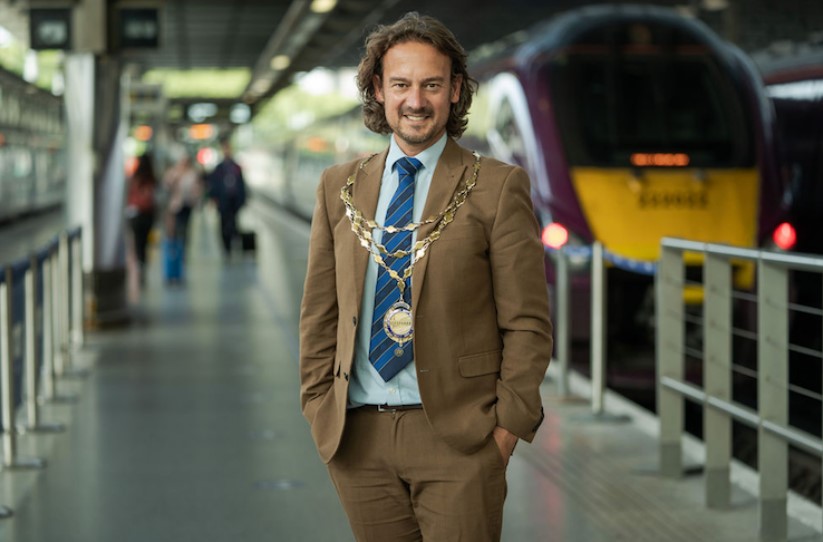Rail Engineer 192 and 193 examined the benefits of being a member of a professional engineering institution and covered the Institution of Railway Signal Engineers (IRSE) and the Institution of Engineering and Technology. In this issue we turn our attention the complementary Permanent Way Institution (PWI). Again, we can see the advantages of being a member of a professional engineering institution, which encourages and facilitates career development, gives support and guidance, offers seminars and conferences, monthly journals, and the award of post-nominals once registered as a professional engineer.
The PWI has, for over 130 years, collaborated with professionals, organisations, and government bodies to improve and develop the rail industry. Originally a supervisory group, the institution quickly expanded to become a technical body for infrastructure engineers, supervisors, operatives, and managers.
At the forefront
The original objectives of 1884 included promoting the general advancement of technical training in the art of maintaining the way and works of railways; adopting a standard competency in the art of inspection and work of maintaining, and providing a certificate or diploma of competence to any person who acquires practical knowledge and experience of such work; and encouraging the acquisition of technical and scientific knowledge by means of lectures and papers descriptive of railway maintenance and construction. Throughout its history, the PWI has stood at the forefront of industry research, science, and innovation by bringing together and cultivating a solid community of experts and enthusiasts.
In 2008-2009, the Committee of Members voted for organisational change. A strategic business review was conducted and the objective of becoming a 21st Century Professional Institution was established.
In 2015, an increasing industry desire to recognise the professionalism that exists within railway infrastructure engineering meant the PWI received significant industry support to begin the application to become a licensed Professional Engineering Institution (PEI). With the support of the Board and in partnership with Institution of Gas Engineers and Managers, an affiliate licence was obtained in 2015 and in early 2019 the Institution became a full PEI in its own right.

Expanding focus
While the title of the Institution describes what has traditionally been identified as the ‘Track’ or ‘Permanent Way’, the constitution of the PWI as set out in 1884 makes clear that the institution has always had an interest in every aspect of the railway between the fence lines. In recent years, the PWI has become the focus for infrastructure electrification engineers and the institution’s president for the coming year is a very senior professional electrification engineer of many years’ standing.
Rail Engineer asked the incoming president, Peter Dearman, why the PWI might attract electrification engineers. He explained that traction electrification is a system that requires the skills of electrical, mechanical, and civil engineers. OLE engineering is a mechanical discipline, the provision and distribution of electrical power are electrical disciplines, a the very prominent issue of OLE structures and foundations is a civil engineering discipline.
The PWI offers a home not just for OLE engineers, and not just for electric traction distribution engineers. The institution will hopefully be seen as the home for electrification engineers as part of the whole community of Railway Infrastructure engineers. While the PWI is relatively small by comparison with the other institutions mentioned, like them it is registered with the engineering council and is increasingly focusing on all rail infrastructure.
Sustainability at heart
The institution has set a sustainability goal as part of its core mission. Nationally, emissions from transport are now the UK’s largest contributor of CO2 and the sector’s rate of emissions reduction is low. Plans for the complete electrification of the UK rail network, using either fixed equipment or battery/fuel cell technology, will significantly help to improve the situation. However, the industry’s best bet to reduce emissions is through modal transfer: persuading passenger and freight road users to transfer all or part of their journey to rail. The PWI community possesses detailed understanding of high efficiency, electrically powered transport and railway infrastructure, making it very well placed to work with other PEIs, government, economists, social scientists, and industry to make sure that the right actions are taken with the urgency necessary.
In light of this, Stephen Barber, CEO of the PWI has stated: “The PWI cannot create modal shift alone, but we can start the debate and help create a picture of how such shift might be facilitated.”
Under the heading of ‘Making a difference’ and to make sure its voice is clearly heard, the PWI has established an Advisory Committee on Climate Change and Decarbonisation chaired by membership director and past president, Joan Heery. The view is that engineering and engineers have a critical role to play in defining the policy and physical actions necessary to deliver decarbonisation and adapt our physical infrastructure to cope with changing weather patterns.
Coordinated through the Royal Academy of Engineering, Professional Engineering Institutions and Learned Societies, the PWI is setting out to achieve the following: (i) capture current good practice and share learning and experience; (ii) agree a practical framework for interdisciplinary and cross-industry sector collaboration; and (iii) commit to working together and producing a practical framework, share learning and experience.
The PWI today
Today, the PWI operates as a strong organisation with over three thousand members and counting, plus over 190 completed professional registrants, demonstrating ever-increasing importance to the industry. The institution exists to enhance the practice of railway engineering, the industry as a whole, as well as the careers of members, and achieves this through a comprehensive offering of training, learning and development opportunities, and resources.

Also provided are technical training courses designed by world-class experts. Thus, is delivered an impressive annual portfolio of technical conferences, seminars, meetings, and talks that unite rail experts from all over the country, and the world, to discuss the latest technologies and industry developments. Particularly valued is the provision of the quarterly technical journal that is recognised as one of the industry’s most valued publications. The institution also continues to grow its partnerships with corporate members, including the industry’s biggest names as well as its most historic heritage railways.
Working increasingly closely with colleges and universities across the UK, through whom the PWI can directly influence and support rail engineering education, the institution’s demographic is broadening. Close working with partner institutions promotes a more diverse industry workforce with equal opportunities and fair standards.
Supporting the core of the PWI is a highly enthusiastic volunteer network, including section committee members and ambassadors who contribute tirelessly to the community. In support there is a strong online presence, encouraging active debate, discussion, and knowledge-sharing through the many social groups.
PWI Sections are the local link to the wider institution. They are effective for learning about rail projects, new technical developments, and networking with like-minded professionals. PWI Sections hold over 200 meetings a year on all aspects of rail infrastructure engineering throughout the UK and beyond. These meetings are open to all PWI Members, so they can dip into other regions when it suits them. Non-members are also welcome to attend as a taster and will be invited to join up to the Institution if the experience was found beneficial. Other activities for members, organised by local sections, include technical visits and online talks.
Future focus
The PWI’s PEI status signifies its journey from being one of the oldest, most consistent professional bodies to a membership institution and professional community like no other. As well as striving to continuously enhance and develop membership services and resources, the forward mission is to fully define the profession of railway engineering in the future. The aim is to encompass all infrastructure and be the centre for technical knowledge.
On its website, the PWI sets out the aims clearly and states: “We will set and maintain professional standards and development, as well as improving competence and opportunity for continuous improvement. We will keep providing networking opportunities, catering for and mobilising our community. And we will provide mentoring opportunities to those with less experience… leading to sustainable growth within the industry and within our Institution.
We will work ever closer with the education sector to influence and support the lifelong career journey of tomorrow’s engineers, managers, and leaders, and we will strive to support the greater good of the industry and all of its stakeholders.”
With many thanks to Chief Executive Officer Stephen Barber, Vice President Peter Dearman, and Technical Director Brian Counter.
Image credit: PWI / istockphoto.com

